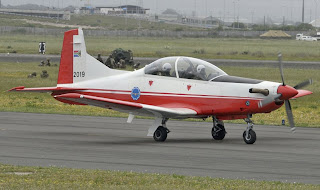People,
Today we would like to enrich you with some interesting facts about India's Unmanned bomb defusing vehicle "DAKSH" also known as ROV Daksh or Remotely Operated Vehicle Daksh.
Daksh is an electrically powered, fully automated Remotely Operated Vehicle (ROV) designed and developed by the India's Defense Research and Development Organisation (DRDO) at the Research and Development Establishment, Pune, India. It is a battery-operated robot on wheels, primarily designed to recover Improvised Explosive Devices (IEDs). Daksh can safely locate, handle and destroy all types of hazardous objects. It can scan cars for explosives using a portable X-ray machine. It can also neutralise Nuclear Biological Chemical(NBC) weapons and has a Radio frequency shield to jam remote signals for triggering a blast. It also has a shotgun, which can break open locked doors and neutralize any potential human threat.
Daksh will serve Bomb Disposal Units (BDU) of the army, police and paramilitary forces in handling IEDs and other hazardous materials.
Daksh is equipped with multiple head-mounted cameras, IED handling equipment, nuclear
biological chemical (NBC) reconnaissance systems, a master control
station (MCS) and a shotgun. The ROV Daksh and MCS are transported by a
specially designed carrier vehicle.
Daksh is equipped with a Radiation Measurement and Automatic Control(RADMAC)
unit and Portable Gas Chromatograph (PGC) to monitor the
contamination level in Nuclear Biological Chemical, or NBC, affected surroundings.
Daksh can be remotely controlled by a single operator using the Master Control Station (MCS).
The control station has a user friendly interface and advanced controls
for managing the multiple operations of Daksh. The wheeled, trolley-based independently-powered system delivers high
mobility in the field. The onboard modern communication systems allow
command and control as well as image transmission between Daksh and MCS. Membrane keypad, touch-screen and joysticks, etc., constitute the MCS.
The carrier vehicle is specially designed to carry Daksh, MCS, bomb disposal stores and crew for hazardous disposal operations.
A separate compartment is provided for equipment storage and space is available for bomb disposal stores. A six-bay lockable rifle rack accommodates weapons of the crew. Either side of the vehicle is provided with rifle port holes for self defense. The vehicle is also equipped with a refrigerator, foldable ramp, 1KVA generator, battery charger, global positioning system (GPS) and rear view display system.
In 2010, the Indian Army placed a limited-series-production order for 20
Daksh vehicles after extensive trials, testing and acceptance. The
first batch of five ROV Daksh was delivered to the Indian Army in
December 2011.
Daksh has proved to be a life saver in many dangerous operations. Hats of to DRDO scientists.
God bless India.
JAI HIND.
Today we would like to enrich you with some interesting facts about India's Unmanned bomb defusing vehicle "DAKSH" also known as ROV Daksh or Remotely Operated Vehicle Daksh.
Daksh is an electrically powered, fully automated Remotely Operated Vehicle (ROV) designed and developed by the India's Defense Research and Development Organisation (DRDO) at the Research and Development Establishment, Pune, India. It is a battery-operated robot on wheels, primarily designed to recover Improvised Explosive Devices (IEDs). Daksh can safely locate, handle and destroy all types of hazardous objects. It can scan cars for explosives using a portable X-ray machine. It can also neutralise Nuclear Biological Chemical(NBC) weapons and has a Radio frequency shield to jam remote signals for triggering a blast. It also has a shotgun, which can break open locked doors and neutralize any potential human threat.
Daksh will serve Bomb Disposal Units (BDU) of the army, police and paramilitary forces in handling IEDs and other hazardous materials.
Visual working mechanism:
The ROV is based on a motorised pan-tilt platform. It can be remotely
controlled from a range of 500m. The vehicle's manipulator arm can
handle hazardous objects of up to 20kg from 2.5m and 9kg from a 4m
distance. Using its robotized arm, it can lift a suspect object and scan it using
its portable X-Ray device. Daksh can defuse bombs
with its water jet disruptor. It can climb stairs and negotiates steep slopes. The solid rubber
wheels of Daksh can withstand blast impacts. The vehicle can tow
suspected platforms and operate continuously for three hours once fully
recharged.
Equipments:
Radiation measurments:
- RADMAC can detect X and Gamma rays from 60keV to 2MeV and is equipped with multiple detectors for gamma dose and gamma flash. The dedicated sensor element can detect radiation leaks.
- PGC detects the presence of gas and the concentration levels. It displays the results in numeric as well as graphical format.
Controlling:
Daksh carrier vehicle:
A separate compartment is provided for equipment storage and space is available for bomb disposal stores. A six-bay lockable rifle rack accommodates weapons of the crew. Either side of the vehicle is provided with rifle port holes for self defense. The vehicle is also equipped with a refrigerator, foldable ramp, 1KVA generator, battery charger, global positioning system (GPS) and rear view display system.
Daksh has proved to be a life saver in many dangerous operations. Hats of to DRDO scientists.
God bless India.
JAI HIND.


















